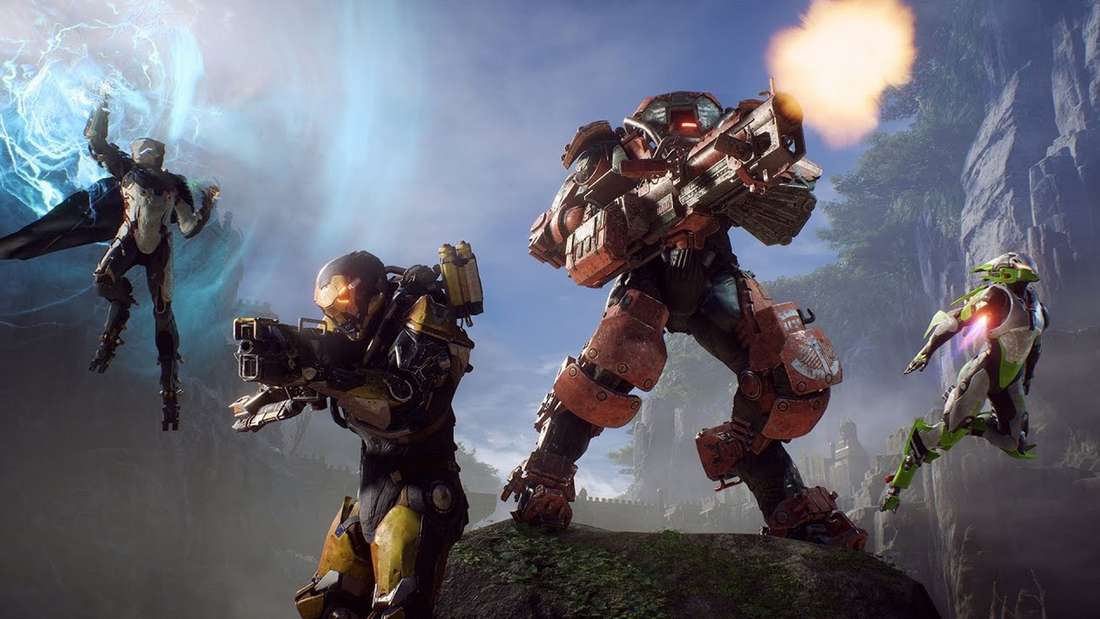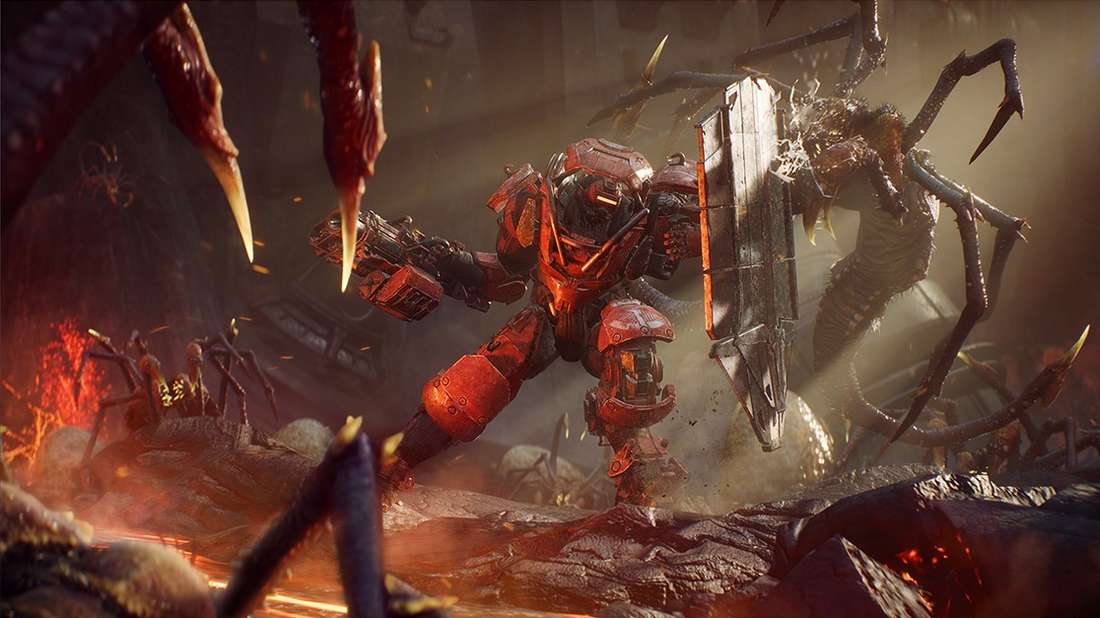EA’s Investment Strategy: The Brutal Calculus of ‘Too Big to Fail’ in AAA Gaming, Contrasting Battlefield and Anthem
Popular Now
 Candy Crush Saga
Candy Crush Saga
 Free Fire
Free Fire
 FIFA 23
FIFA 23
 NBA 2K24
NBA 2K24
 God of War Ragnarök
God of War Ragnarök
 Poppy Playtime
Poppy Playtime
 Grand Theft Auto V
Grand Theft Auto V
 BeamNG.drive
BeamNG.drive
 Auto X Drift Racing 3
Auto X Drift Racing 3
 Among Us
Among Us
 The post-launch fate of high-profile video games at Electronic Arts (EA) has long been a subject of intense scrutiny, particularly when comparing the recovery of troubled titles from established franchises to the abandonment of new, struggling Intellectual Properties (IPs). Recent statements from former BioWare Executive Producer Mark Darrah have provided a blunt, illuminating look into the publisher’s internal investment logic, confirming that brand history and sales expectations—a metric often tracked via high CPC keywords like “game revenue” and “franchise sales”—dictate which projects are deemed worthy of a multi-year rescue effort.
The post-launch fate of high-profile video games at Electronic Arts (EA) has long been a subject of intense scrutiny, particularly when comparing the recovery of troubled titles from established franchises to the abandonment of new, struggling Intellectual Properties (IPs). Recent statements from former BioWare Executive Producer Mark Darrah have provided a blunt, illuminating look into the publisher’s internal investment logic, confirming that brand history and sales expectations—a metric often tracked via high CPC keywords like “game revenue” and “franchise sales”—dictate which projects are deemed worthy of a multi-year rescue effort.
The core of the issue, Darrah suggests, lies in a “too big to fail” doctrine applied to cornerstone franchises like Battlefield and The Sims. This is a critical distinction in the modern video game industry, where a rough launch no longer signals an immediate end for a massive property, but rather the beginning of an expensive, calculated turnaround operation.
 Battlefield 4 and The Sims 4: A History of Guaranteed Returns
Battlefield 4 and The Sims 4: A History of Guaranteed Returns
Both Battlefield 4 and The Sims 4 experienced famously rocky launches in the early 2010s, plagued by technical instability, server issues, and, in the case of The Sims 4, significant content omissions. Yet, EA invested heavily—and successfully—in their long-term recovery. The reason, according to Darrah, was simple market reality.
“Battlefield had this track record of selling way more than 10 million copies, so it was seen as, to some degree, too big to fail,” Darrah explained. “It was seen as already a giant franchise, so the effort was seen as bringing it back to something it was already shown to be.”
This perspective is a fundamental pillar of AAA game development economics. The Battlefield IP, developed primarily by DICE, has consistently delivered blockbuster sales numbers and serves as a tentpole franchise for EA’s fiscal year. Investing millions more to stabilize the game and restore player trust was not a philanthropic gesture, but a calculated business move to protect an asset that was highly likely to generate significant long-tail revenue through premium DLC, live services, and future installments. A similar logic applied to The Sims 4, a game with a uniquely loyal and massive global audience that drives phenomenal, predictable high-margin digital sales through expansion packs and microtransactions.
The investment in these titles was about restoring the minimum expected value of an established premium gaming franchise, leveraging its proven ceiling for sales and its strong brand loyalty, which are prime considerations for any stock market analysis of EA’s portfolio.
Anthem: The Peril of a New IP Without a Guarantee
The experience of BioWare’s Anthem, a new live-service looter-shooter released in 2019, presented a stark contrast. Despite being developed by the revered studio behind Mass Effect and Dragon Age—an association that initially generated tremendous pre-launch high-value keyword interest and sales—the game’s launch was disastrous, marred by a weak story, repetitive mission design, and a severely underdeveloped loot system. While BioWare attempted to rally with the promised ‘Anthem 2.0’ overhaul, EA ultimately terminated all new development in 2021.
The decisive factor in this termination was the absence of a proven track record. Anthem, an entirely new IP, had not yet earned the status of “too big to fail.”
Darrah stated, regarding the decision to cease a full recovery attempt: “As opposed to something like Anthem, which was new. It wasn’t clear or obvious or a given that it was going to be that big.”
This difference highlights the harsh reality for new IPs in the live-service gaming market. Anthem’s potential for a massive, multi-year return—the FIFA numbers former executives had reportedly hoped for—was never fully realized. For EA, a company known for aggressive portfolio management, continuing to pour millions into a game with an uncertain path to profitability, especially when BioWare had established, highly profitable franchises like Dragon Age and Mass Effect to return to, was deemed an unacceptable risk. The resources were better reallocated to projects with more predictable returns, a core principle of financial planning in technology and gaming.
 The Internal Structure: A Contributing Factor
The Internal Structure: A Contributing Factor
The dynamics within the development studios themselves further exacerbated this difference. DICE, the primary developer of Battlefield, is highly focused on that single, massive franchise. Had they walked away from Battlefield 4 in its initial state, the future of the entire studio would have been jeopardized. Darrah noted that for DICE, “Battlefield is all [they] had, and would have no choice” but to fix it.
BioWare, conversely, possesses a robust catalog of beloved, high-value IPs. If Anthem failed, the talent could be—and was—reassigned to the much safer and more profitable development of the next Dragon Age or Mass Effect. This internal flexibility provided EA with an easy out, making the choice to cut losses on the struggling new IP an even clearer business decision from a long-term franchise management perspective.
A New Era of Risk Assessment in Gaming
The contrasting fates of these titles serve as a sober lesson in video game market risk. For consumers, it means that a game’s future support is not just a reflection of its quality, but a calculation based on its legacy and projected revenue ceiling. New, innovative IPs carry a higher risk of abandonment, regardless of initial potential or the talent of the development team, if they fail to meet immediate, high-bar sales targets.
As the industry moves toward more expensive, long-term live-service models, this “too big to fail” philosophy will likely become even more entrenched. Publishers will continue to prioritize the sustained investment in proven, mega-franchises over the costly, uncertain redemption of new, yet-to-be-proven ventures. This is a critical piece of gaming news analysis that explains much of the major publisher strategy in the current digital entertainment economy.
Review Summary: The Economic View on Game Lifecycles
- Established Franchises (Battlefield 4, The Sims 4): Were supported post-launch because they had a history of over 10 million copies sold (Battlefield) and predictable, massive digital revenue (The Sims), making their rescue a necessary defense of a “too big to fail” asset.
- New IP (Anthem): Lacked a proven sales track record, meaning its potential future value was not “a given.” The high cost of a full recovery was deemed too risky.
- Studio Structure: DICE’s focus on Battlefield necessitated a fix, while BioWare’s ability to pivot to the more lucrative Dragon Age and Mass Effect provided EA with a financially sound alternative to sustaining Anthem.
- Industry Insight: This differential treatment highlights a brutal AAA game development philosophy where brand legacy and proven sales history outweigh the potential for a new game’s redemption.
This reality informs the decision-making at the highest levels of Electronic Arts, underscoring that in the highly competitive global entertainment market, financial prudence often overrides creative sentiment.







